Female Villains
Recently I read an article at Tor entitled “Villainesses Required: Why the Dark Side Needs More Women” by Elise Ringo. In this look at female villains, the author made a plea for more females who acted in villainous was, not in reaction to the men of their lives, but for their own ends. In other words, not women who were jealous of another woman’s beauty or who wanted to eliminate a rival in order to win a man’s hand. Rather, Ms. Ringo longs for
women who are extended the same complexity and depth—and, potentially, sympathy—as their male counterparts, and also women who are really, truly, bad. Women who are willing to burn the world down—maybe because it wronged them, maybe just because. Women who are ambitious, who crave power, who are willing to crush people on the way to the top.
These are interesting thoughts. I sifted through my small sample of speculative fiction to see if I could name any female protagonists. I didn’t have to go far to land on the White Witch, who qualifies in every way to what Mr. Ringo says she wants. I suspect in C. S. Lewis’s day, putting a woman in the role of the great evil of the universe was just one note in the chord of critics who claimed he was a misogynist.
Perception is everything in this day and age, I guess.
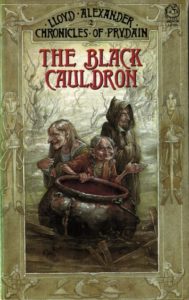 Another series that came along some ten years later is Lloyd Alexandar’s Chronicles of Prydain. In the second book of the five-book children’s series, The Black Caldron, three female antagonists arise, three witches named Orddu, Orwen and Orgoch. They are, in many ways, responsible for the rise to power of the over-arching antagonist who used their caldron and the magic it contained to create an army of evil through which he ruled.
Another series that came along some ten years later is Lloyd Alexandar’s Chronicles of Prydain. In the second book of the five-book children’s series, The Black Caldron, three female antagonists arise, three witches named Orddu, Orwen and Orgoch. They are, in many ways, responsible for the rise to power of the over-arching antagonist who used their caldron and the magic it contained to create an army of evil through which he ruled.
The next iconic female antagonist I could think of is television’s Borg Queen, most clearly fleshed out in Star Trek: Voyager. She, of course, met her match when she went up against the female protagonist, Captain Kathryn Janeway. But she seems to fit Ms. Ringo’s qualifications for a female who wants to crush the galaxy and rule all—even though she is tied to the hive mind and thinks in terms of us and we.
Of course there is a trend of books, plays, and movies that turn the traditional antagonists of such stories as The Wizard of Oz and Sleeping Beauty into the more sympathetic protagonists. Do those count? In their original roles they were the very female antagonist Ms. Ringo decries: flat, simplistic, evil because they wanted female things, not for power and ambition like men do.
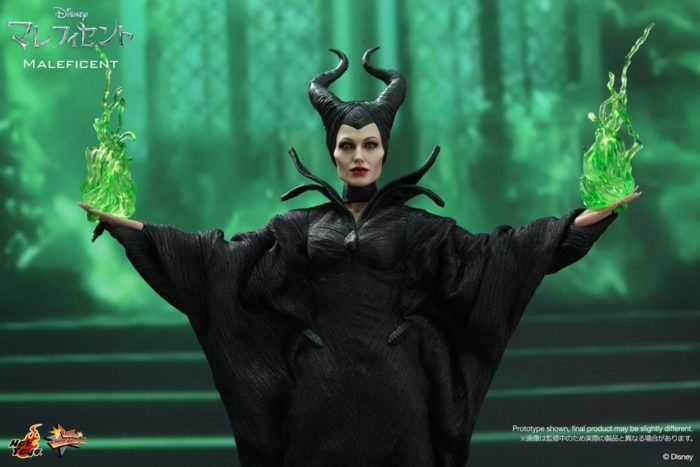 On one level, I see what Ms. Ringo is saying. There really aren’t many female “bad guys” that I can think of. What’s more, the more recent ones do seem to be bad for very “unfeminist” reasons. They are jealous of the prettier girl. They do want to marry the prince. They hope to exact revenge on their perceived rival.
On one level, I see what Ms. Ringo is saying. There really aren’t many female “bad guys” that I can think of. What’s more, the more recent ones do seem to be bad for very “unfeminist” reasons. They are jealous of the prettier girl. They do want to marry the prince. They hope to exact revenge on their perceived rival.
But that makes me wonder: are these female antagonists somehow unworthy because they act like women and not like men? One of my complaints about the feminist movement is that it actually strips women of their unique attributes and basically says women aren’t really good unless they are doing what men do, only better.
So protagonists have to be “bad-ass” women who better most men physically in hand-to-hand combat. It’s not enough that they are like Miss Marple, able to out-smart criminals and most police lieutenants or detectives. That type of role is still “too feminine.”
But I digress.
Ms. Ringo also wants female antagonists to whom she can relate:
The villains I like most are the transgressors who push the boundaries of right and wrong, whose darkness has layers. There’s a certain power fantasy involved, not just in watching a great villain behaving badly but in seeing someone who challenges conventional morality, who defies easy categorization and invites sympathy for the devil.
Sympathy for the devil? This concept is precisely why I think speculative fiction should not have the “pet the dog” moment for the antagonist—that scene which causes a reader to see the antagonist’s pain or brokenness or lovable side. Speculation gives writers an opportunity to delve into the spiritual war that rages within. In real life I don’t want to “give the devil his due,” let him argue with the angel on the other shoulder, and definitely I don’t want him to win.
As I see it, treating the devil as anything but the devil is clouding the picture speculative fiction can paint.
While I do not agree with the reasoning Ms. Ringo brings to her conclusions, I do understand from a literary point of view that complex characters are more interesting than flat, uncomplicated ones. Consequently, her point—that speculative literature needs more complex female antagonists—seems to me to be valid.
When it comes to contemporary literature written by Christians, I was hard pressed to think of one female antagonist. Maybe my reading sample is just too small and they are out there, but I’m not aware of them. I can see promise in stories that have female antagonists—ones who act like Jezebel or Athaliah who became queen of Judah by killing all the royal offspring.
Now those where worthy female antagonists.































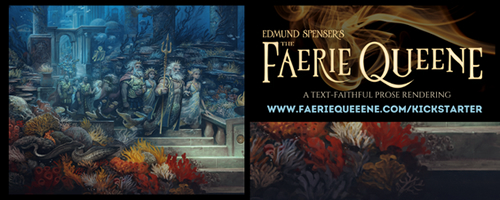

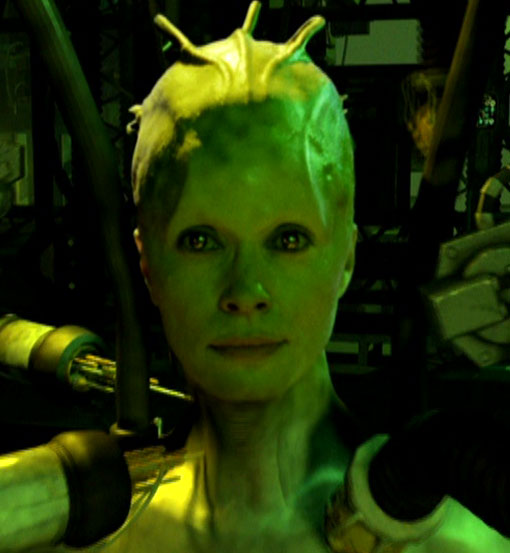
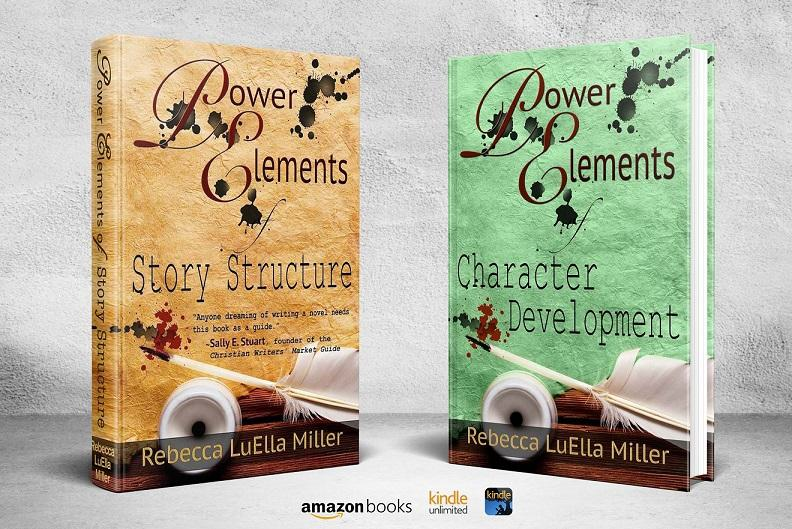








Bryan Davis actually has a number of female villains in his books, such as Morgan in Dragons in Our Midst.
I think feminine female villains are fine, but I don’t mind seeing more variety. We can have some that are evil for feminine reasons, but having some who just want to take over the world, or watch it burn, is fine too.
In some cases, I think showing the villain in a sympathetic light can be beneficial. For example, if the villain became the villain because the “good guys” bombed his village and killed his family, that could make readers think about how recklessly killing civilians can lead to radicalism among those who normally wouldn’t have been a threat. However, I also see things where the villain gets too much sympathy, especially in the current time. I think it’s fine for the audience to feel sorry for the kid who had his family killed during the bombing, but very different to make them feel sorry for the terrorist who has become as evil as the ones who killed his family.
Granted, we are also commanded to love our enemies, and I would guess that includes villains.
Hmmm, I don’t remember the Morgan character and I edited Dragons in Our Midst! All I remember is the false principal who was after Billy. But I haven’t read it in years.
I agree that variety is good. It keeps stories from being predictable. But I don’t think we have to give females “equal opportunity”! 😉
I’m glad you addressed the sympathetic aspect of portraying villains. You have done a nice job giving the pros and cons. It’s not a simple issue.
Becky
It was in the later books when Morgan Le Fey showed up. Bryan Davis also has a female villain in Reapers.
S.D. Grimm’s “Children of the Blood Moon” series has a fantastic female villain (actually… all of her books have women as the main villain, now that I think about it), just to add to that list a bit. And I don’t know what specifically you mean by “contemporary” — not sure where your cutoff is — but the first female villain that always comes to my mind would be Jadis, the White Witch.
Side note: I somewhat object to the the line about Maleficent and the Wicked Witch being villainous because they desired “female things” — of all the examples out there, these are probably two of the most “evil for the sake of power” lady villains out there. Maleficent wanted power and respect and to be feared, and the Wicked Witch (though, yes, directly she was after a pair of shoes) is also after power and ultimate magic.
The Wicked Witch certainly got shafted in that weird “Oz the Great and Powerful” movie. Whatever form her original motives were, I bet they were waaaaay better than “a man gave her too many sadfeels to get over.”
Thanks for adding Grimm’s books to the list of those who have female villains. By “contemporary” I wanted to steer readers to something more recent than the ones I’d mentioned, like the White Witch and the three witches in Alexander’s books.
I don’t remember the Maleficent movie very well. Wasn’t she jealous of Belle? Or am I getting it mixed up with another one?
Becky
The first one who immediately pops into my mind is Hri Sora, the Dragonwitch from the Tales of Goldstone Wood. A legendary figure in the first few books, properly introduced in 4, and then the subject title of Book 5…..a truly compelling female villain, driven by jealousy, heartbreak, bitterness, and utter hatred. Both a terror and a tragedy. Also in the same series is the eerie Sister, the deceptive side of the Devil. She especially gets focus in Book 7, along with her chosen oracle.
C.J. Redwine also has some excellent wicked women.
Oooooh, another good example. Yes, the Dragonwitch certainly is a worthy female villain.
I’m not familiar with Redwine’s work. Thanks for adding these to the list.
Becky
What exactly are “female” reasons for evil, tho? Besides, like, lame stereotype junk where women’s lives supposedly revolve around men.
I can find a female character who manipulates men interesting, but only if her reasons for manipulating men are interesting. Like, she manipulates them in order to have control over her life when otherwise she wouldn’t have control at all. Or something like she’s gonna lie, cheat, and steal rather than go hungry again.
But that’s not exactly “female,” and if it remained Lawful Neutral, might not tip the scales over to “evil,” either.
Well, you nailed it, notleia. According to Ms. Ringo they are women doing bad for the sake of gaining approval of a man or as a way to get even with a woman she is jealous of because of her appearance or because she has the desired man.
You pretty much described Scarlet O’Hara when you said “lie, cheat, and steal rather than go hungry again.” But she’s the protag in Gone with the Wind, not the antagonist, certainly not the villain. Interesting.
Becky
Half Diana Wynne Jones’s villains are female. The very scariest one is Black Maria, the little old lady who rules the town with an iron fist via tea parties and other frilly old lady social things. Then you find out that she magically imprisoned her husband for opposing her. And she turns her grandson into a wolf, then sends the hunters after him … and you find out she did the same thing to her daughter. Absolutely terrifying villainess, and she did it to maintain her power base.
Wow! Yeah, that qualifies as a female villain. Is Diana Wynne Jones a Christian writer?
Becky
It’s a bit of a pet peeve of mine when people call an author sexist or whatever just because the author has a character or two that meets a certain stereotype. Maybe the author is or isn’t sexist, and maybe it’s alright for readers to think that the author might be sexist, but that shouldn’t translate into hurling around accusations and nasty rumors. At the very least people should thoroughly investigate the author and perhaps talk to them to understand their perspective before bothering to get angry.
In the case of C S Lewis, I wouldn’t be surprised if he was a tiny bit sexist due to the time period he lived in, but Narnia didn’t really portray women that badly, and at the very least his portrayal of women shouldn’t be judged based on Jadis. I mean, come on, there were many very positive portrayals of women as well, and sometimes, like in the case of Lucy, Susan and especially Aravis, they seemed to be far more fleshed out and human than characters like Peter.
Having characters that meet stereotypes can be ok in some instances, so long as authors try to deviate from that stereotype sometimes and have a few chars that are a bit different. With C S Lewis, for instance, he didn’t have women only in a Jadis like role. He also had women that were kind in addition to being strong. Or, in the case of Aravis, flawed but still good and learning how to be better.
The easiest and most important thing to remember when writing women or any other character is simply letting them be individuals that are reacting to situations based on their personality and experiences. One problem a lot of modern media seems to have is that people seem to subconsciously think in terms of slightly altering currently existing character models that sell well in order to avoid sexism/earn feminism points. Instead, they should back away from all that and just let the characters be who they are. A lot of high quality anime does a good job of this, actually. Fate Zero has lots of good female characters, for instance.
A lot of this kind of depends on what kind of story the author is trying to write, though. Is it supposed to be a story that’s realistic in terms of human psychology and behavior, at least to an extent? If so, it isn’t always realistic to portray the villains as ‘evil’. A lot of times people have actual reasons behind their behavior, even if their behavior can be considered immoral. My current work in progress is kind of like this, actually. The main villain is a being that is constantly hungry, but cannot die and has several subordinates with the same issue. She isn’t evil, and she cares a lot about her subordinates, but she’s the ‘villain’ because the only way she knows to fix her situation is to basically steal/destroy things belonging to another character.
If the author is instead trying to go with a more ‘fairy tale’ type of story, where many aspects of the story represent things rather than trying to illustrate the exact details of real life, that’s a whole other matter. It makes more sense to actually paint people in those stories as evil because, in a sense, they might actually represent behaviors/concepts/ideas that are evil.
Good thoughts, Autumn. I think Lewis got the label of misogynist as much for his portrayal of Susan as for that of the White Witch, Susan who liked “girl things” being the only one who didn’t remain in Narnia.
But yes, a character should follow her own personality and not a stereotype. Some antagonists aren’t villains, as you pointed out. But I don’t thing we should be afraid to portray villains as villains. The current idea is that nobody is a villain, really.
My thinking here, and not the point of this post obviously, is that showing a complex character isn’t as important as showing a motivated character.
Thanks for adding to the discussion.
Becky
If people thought him sexist for that portrayal of Susan, it kind of makes me sad in a way. I don’t know what his exact intentions were, but the impression I always got while reading his books was that Susan didn’t come back to Narnia in the last book because of her specific attitude toward Narnia, growing up, etc. and her particular opinion of girly things, instead of it being solely because she liked girly things.
And yeah, there probably isn’t any one exact way to write a character. The approach that fits probably depends mostly on what kind of story someone wants to tell.
At least 2/3rds of the villains (whether seeming or real) in my nine published books are women. Not even one is motivated by jealousy over a man or the desire to be the most beautiful; not one of them is a kick-butt warrior woman or a sexy femme fatale; and all of them argue that they are doing the right and best thing for their people, or at least that their actions are justified under the circumstances.
As a writer and a reader both, I prefer villains with motives that make at least some kind of logical sense, even if their methods are horrible. A twisted good seems to me much more realistic, and indeed more Biblical on the whole, than pure evil-for-evil’s sake. “Every way of a man is right in his own eyes,” after all.
Amen, amen! I should have thought of your books, RJ. Excellent additions to the list.
And yes, the motive of the villain is far more important, I think, than the idea of showing them as some sort of mixed good and evil. As long as they justify their actions and their justification rings true to their character, it works, I think.
Becky
Female villains are also more likely to get the sympathetic-backstory treatment than their male counterparts. Especially if that backstory involved being wronged by a man.
Also, critics often tend to treat female characters as representatives of what the author thinks about all women, while not doing the same for men. So if the author writes an evil villainess, some critics will often call them sexist.
Really interesting observations! That says a great deal about critics and readers. Thanks for adding to the discussion.
Becky